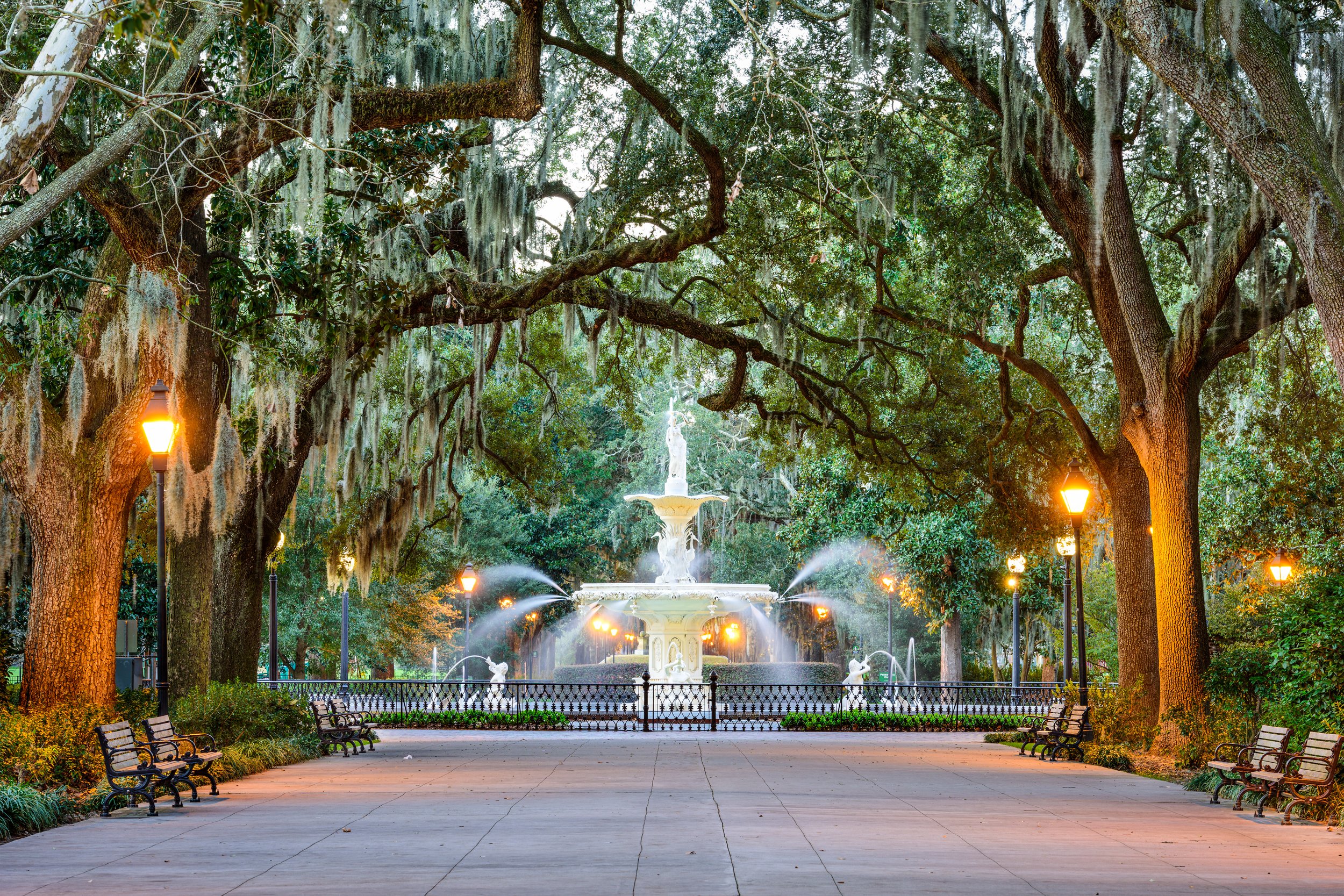
The Lt. Galloway Suite
The Lt. Galloway suite gets its name from our grandfather, Jim Galloway, at the Inn who fought in the Pacific during WWII.
Jim and the Galloway side have a fascinating history in Savannah. We are direct descendants of Hugh McCall, the first historian of Georgia, who is buried right here in Savannah at Colonial Cemetery.
Jim always had a passion for building, which led him to study engineering at the University of South Carolina. After the war, he even built his own plexiglass furniture. Our interest in the building arts definitely comes from him. Given the hard work that went into dismantling and reassembling the Hills house, we felt it was fitting to put our name on it. Like many old houses in Savannah, such as the Owens-Thomas house or the Sorrel-Weed house, this one now has two names.
Regarding the room itself, all the woodwork, including the crown molding, mantle, doors, wainscot, floors, and hardware, originates from a different house: the Joseph Fairbanks house in Bellingham, Massachusetts. This house was considered for relocation, but instead, the rooms were sold off, and we obtained two, including the Parlor and Parlor Chamber. The woodwork here dates from the 1790s to 1805 and comes from the house’s formal front parlor. Architecturally, it is very transitional. It features some elements of Georgian design in the fireplace mantel but also incorporates design cues from the newer Federal era, which began around 1790. These features include Norfolk latches and six-panel doors.
We curated this space with antiques mostly from the Federal era/Early Republic period, including a William Jennys portrait of a Connecticut gentleman, a Banjo clock, and a gilt gesso mirror.
The Antiques
Artist Bio: William Jennys American (1774-1859)
William Jennys and his father Richard were prolific portrait painters, primarily active in Salem, MA, and parts of Connecticut during the late 18th and early 19th centuries. William is credited with 199 paintings, while his father Richard has 45 attributed to him. The Jennys painted prominent citizens of New England, presenting their sitters in a plain and conservative manner, unlike their contemporary Ralph Earl, whose subjects often displayed elaborate dress and possessions. This simplicity in the Jennys' portraits was due to the high respect commanded by their subjects' societal positions. The self-reliant and assured nature of these prominent New Englanders is evident as they gaze back at us from their portraits.
The first record of Richard Jennys as an artist appears in a transaction with Paul Revere in October 1764, involving a "gold picture frame." However, during the 1760s, John Singleton Copley, one of the era's most accomplished portrait artists, dominated the Boston portraiture scene. Richard seems to have spent the next couple of decades as a merchant, and between 1783 and 1792, he lived in Charleston and Savannah, where he was advertised as a portraitist, though little documentation exists from this period. It is believed that Richard and William returned to New England in 1792, where William first advertised as a portrait artist. While Richard and William collaborated on some portraits, most of their work was done independently. Both were exceptional at painting faces.
History Of: Banjo Clocks
These early 19th-century clocks were patented by Simon Willard (1753-1848) in 1802. Simon was one of the most famous clockmakers of the 18th and 19th centuries, catering to wealthy clients, including Thomas Jefferson, who commissioned a clock for the University of Virginia. Simon's youngest brother, Aaron Willard (1757-1844), moved to Boston around 1790 and established his own clockmaking company, producing various styles, including the Banjo clock. These clocks became very popular in the early 19th century due to their affordability. The nickname "Banjo" comes from the clock's upper shape, resembling an inverted banjo. However, the Willards never referred to these clocks as "Banjo" clocks. Characteristic features of a Banjo clock include a circular dial with a narrow metal frame and a dome-shaped glass bezel. The top always bears a finial, with acorn and eagle designs being common.





